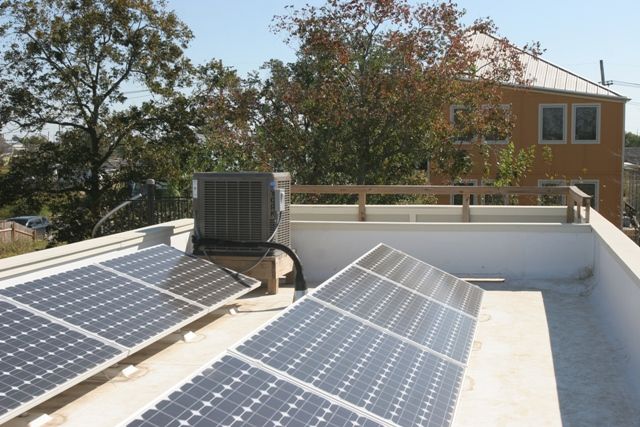
When architect Linda Reeder proposed an article on Brad Pitt’s Make it Right Foundation and the houses it was constructing in New Orleans’ devastated Lower Ninth Ward, the suggestion was met here with some hesitation. Fine Homebuilding isn’t in the business of promoting causes, fawning over celebrities, or getting involved with issues of urban development—all aspects of Make it Right’s mission.
But there is one thing that does get our attention, and that’s building better homes. And it was clear to us that from its inception, Make it Right differed from other efforts to rebuild New Orleans for its emphasis on design and construction, and actively working to find the most cost-effective ways to build homes that are safe, sustainable and energy-efficient.
I got a chance to see MIR’s work up close a few weeks ago. As the editor handling the article (watch for it in early 2012), I wanted to know the back story on MIR’s experience, and literally get the lay of the land in the Lower Ninth. And I’ll admit it: I also wanted to reconcile in some way my own nagging doubt about the validity of imposing what seemed to be an architectural experiment on a long-suffering neighborhood.
I talked with Cesar Rodriguez, MIR’s procurement and construction services manager, as we made our way through the 16 square blocks where MIR has completed 80 of its planned 150 homes. In building those 80 homes, MIR has learned a lot: That floating homes don’t necessarily rise to the top; that there’s a better way to attach solar panels to metal roofs, and that advanced framing is great, but you can get there faster and cheaper with SIPs. They’ve learned how to cut down on foundation costs, and when to back off from the bleeding edge when it comes to new green technologies. Yet at the same time, they’ve made significant advances in permeable paving and figured out how to build-in commonsense defenses against violent weather that ought to be no-brainers in any area where nature’s wrath is prone to strike.
MIR may be lit with the glow of star power, both from its founder and the “star-chitects” whose modernist designs have drawn both praise and criticism, but the reality is this: On the building site, MIR contractors face the same challenges as everyone else. And like anyone else, they’ve adjusted their methods and materials to meet those challenges. In that way, it could be any neighborhood.
Fine Homebuilding Recommended Products
Fine Homebuilding receives a commission for items purchased through links on this site, including Amazon Associates and other affiliate advertising programs.

All New Kitchen Ideas that Work

Get Your House Right: Architectural Elements to Use & Avoid

Graphic Guide to Frame Construction
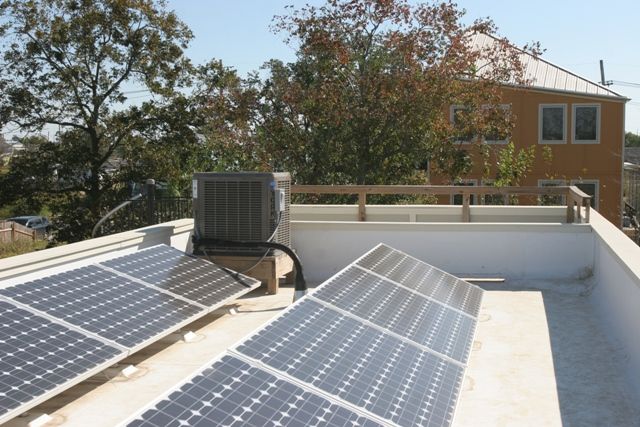
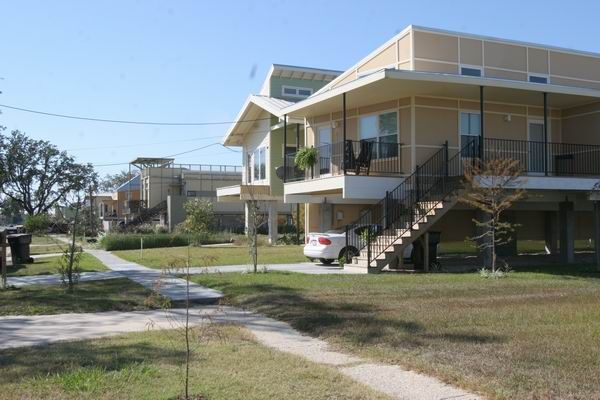
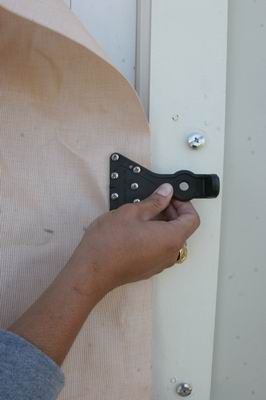
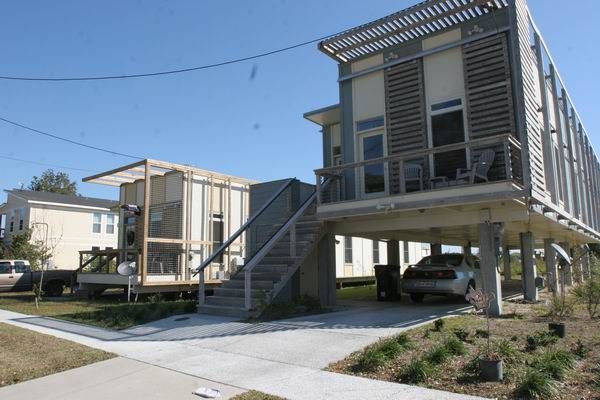
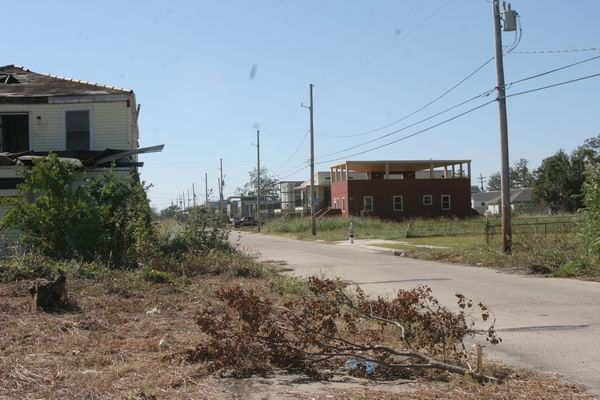






























View Comments
As usually happens, marvelling over the accomplishments completely ignores why those accomplishments were even attempted- or whose job it was to make the decisions. I can't think of any previous post in FHB that casually overlloked so many cans of worms. It borders on dishonesty, even propaganda, the 'big lie.'
FHB not taking on causes? I'd never get that impression, considering the frequent nice things said about "Habitat for Humanity," and the regular links to something called the "Green Building Advisor."
"Make it Right" is an noble ideal - and also a trademark of Mike Holmes. Mike also came down from Canada to build in New Orleans. What does his "Make it Right Productions" have to say about Brad Pitts' use of the name? How do the houses of the two groups compare?
Left unexplained is who is paying for all this. I suspect that it's not being funded by the poverty-level former residents. This question is quite relevant, as it also begs the question of who decided to rebuild there in the first place.
IMO, once a place has become unsuitable, you don't build there again. Considering the timeline, I would expect the former residents to have settled into new lives elsewhere. Even the Dutch -reknowned for building below sea level- shied away from the area, founding their colony in New York, rather than New Orleans.
A final detail regards insurance. Reviewing standard homeowners' insurance 'forms,' I note a blanket exclusion of houses built on stilts. Have we marvelously engineered houses that cannot be insured?
I must confess, though, that the idea of fishing from the front porch after the next storm appeals to me.
Am I missing something? This blurb reads more like a PR piece instead of something I would expect to read in Fine Homebuilding.
Perhaps I am missing 10 key construction best practices MIR has learned and applied in their effort to build in New Orleans or do I need to buy the print magazine to find that?
Since Katrina I have heard a lot about how New Orleans shouldn't be rebuilt because it is subject to hurricane and flooding. My usual response is "Uh huh, just let me know when you are ready to abandon San Francisco. Or Venice. Or about 40% of Holland."
New Orleans is what it is because it has endured and lived with more trouble and disaster than any American city I know of. The people there have been burned, invaded, blown away, enslaved, and flooded. And it has a vibrant and original culture that is unequaled in this country, to say nothing of being equaled by the white-bread sterility of the suburbs we have been so busily building for the past six or seven decades.
Who is paying for it? I don't have any inside info, but I'd say Brad Pitt's foundation and the Make It Right crew are putting up the money. To my knowledge [limited] the owners are set up with an affordable mortgage on which they make payments. That sound like a problem? I don't think so.
renosteinke writes:
>"Make it Right" is an noble ideal - and also a trademark
>of Mike Holmes. Mike also came down from Canada to build
>in New Orleans. What does his "Make it Right Productions"
>have to say about Brad Pitts' use of the name? How do the
>houses of the two groups compare?
I'd say they are just about identical, since they are one and the same:
http://en.wikipedia.org/wiki/Make_It_Right_Foundation_New_Orleans
Not sure what your motivation for posting such a negative comment about the organization, and I'm fascinated by your theory that the Dutch made a concious decision to settle in the Hudson River Valley versus the Mississippi, like they had sattelite maps and no geo-political concerns about upsetting the major world powers already settling the New World.
Admittedly, the article is light on details (most of these teaser web artcles are), but since almost all of you concerns are readily answerable if not imherently obvious (did you really think the Mike Holmes machine would be unaware of such a high profile project, and that Brad Pitt just happened to choose Mr Holmes catchphrase for his foundation name?
Its an interesting project, and certainly at least partially funded by donations, though wisely those donations seem to be used as more seed to create a sustainable process than high flash "giveaways" of a useless showpiece by a Makeover show.
FHB:
I'm looking forward to seeing the upcoming article on Doing It Right in New Orleans, both from the social and architectural design aspects. For those who question whether publishing the article represents 'pressing a cause' or 'beating a drum', I would simply remind folks of the old adage 'If you don't stand for something, you'll fall for anything!'
Kudos to FHB for the upcoming article.
Some interesting comments here. Surly you'll read the article when it comes out and let us know what you think. Deb is hard at work pulling the piece together.
I had some initial concerns about the architectural component of the Make It Right Project. At first glance some of the homes seemed well suited for each architect's portfolio, but not for the people that would ultimately live in them.
However, after talking to Deb (who recently visited the Lower 9th Ward) I feel better about the work that's being done there.
Take a look at some of the completed homes here.
http://www.makeitrightnola.org/index.php/work_progress/mir_homes/
I think we'd all be interested to see what you think of the results so far.
RYagid:
I ran through several of the slide shows and all in all they look quite good. I'd be interested both in floor plans and comparable construction costs, which hopefully the article will get into.